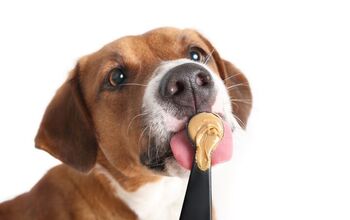Grooming Your Rabbit: Everything You Need to Know

For decades, rabbits have been quite popular pets – they boast many great personality traits and look cute to boot, so it’s not a big surprise. Of course, as all pets, they require plenty of care, affection, and attention to thrive, so they’re not any less demanding than a cat or a dog. And grooming plays a big part of that care process. It doesn’t only serve to make your rabbit look their best – it can help with many other aspects as well. After all, grooming is the path to cleanliness, and cleanliness is the foundation of good health.
Grooming a Rabbit’s Coat
When you think of pet bunnies, the first thing that often comes to mind is soft and endlessly fluffy fur. But in order to achieve that softness and delicate texture, your rabbit needs regular brushing and grooming. Still, before any grooming is to commence, you need to be certain that you did a good job at socializing and handling your pet rabbit. They are prey animals in nature, and as such, they can be quite fearful. From an early age, teach them that handling is nothing to be scared about. This will build your relationship, limit the natural feeling of fear, and allow you to groom them without a hitch. Once your bunny is comfortable with being handled, you can begin regular brushing every 3 to 7 days. This is important as it gets rid of any loose hair, which rabbits can ingest while they self-groom. This can lead to potentially serious health problems, and burden their digestive system. How often you brush often depends on the coat length of your rabbit – short-haired breeds can require infrequent brushing, as little as once per week, while long-haired ones can require daily brushing at times.
Remember that rabbits have sensitive skin and delicate coats. You can’t use any old brush for grooming. Invest in a soft-bristled brush that is designed especially for rabbits. If you use a stiff and coarse brush, you can even cause some damage – not to mention that your rabbit will start hating the entire process, which is not good. Another crucial thing is to choose the right moment. If you see that your rabbit is fidgety, stressed, unhappy, or simply not in the mood, it’s best to wait a bit. Grooming them when they are not cooperating might cause them even more stress than necessary.
When you begin grooming, start with the back end first – a rabbit needs a good cleaning in the hind area. Use a damp cloth or a special wet tissue, and carefully clean any remnants of pee or poop. This is a vital part of the grooming process. Then, as you actually begin brushing the fur, follow the natural direction of their hair, which often goes from the neck towards the bottom. Use gentle, even strokes, and don’t miss a spot. If you see any tufts of hair be sure to remove them – they are a big no-no. Clean their head with great care. You can dampen a common cotton ball and clean around their eyes, nose, and ears. Of course, don’t forget to check every spot on your pet’s body for signs of anything out of the ordinary. These include lumps, odd spots, mites, and anything similar.
Nail Trimming
While trimming your bunny’s nails can be infinitely more challenging than simply brushing their fur, it’s still a necessary part of their grooming routine. Rabbit nails can grow very long, especially if they’re not active, and can become a hindrance – or even cause health issues if left completely neglected. The first thing to note, of course, is how you handle your bunny. They have to be fully comfortable with you if you want to trim their nails without much hassle – you don’t want them jumping out or wiggling while you’re cutting their nails.
Place your bunny in your lap, on their back, with their feet looking up or, if they are not comfortable with being on their back, place them on a raised surface and lift their feet when it’s time to trim the nails. Be careful, though, because if you place them on a table, for instance, they might jump from a big height and injure themselves – only attempt this with docile bunnies. When you’re cutting their nails, don’t go too deep to avoid cutting into the quick, which would cause bleeding. If you're too afraid to cut your bunny’s nails on your own, you can get them to a vet and they can do it for you – have in mind that their nails should be trimmed once a month.
Conclusion
Once you get a hang of it, rabbit grooming will prove to be a straightforward and simple affair. Make sure you’re thorough, gentle, and regular – and your pet won’t have issues with matted hair, loose hair ingestion, bad smells, and overall bad hygiene. After all, no bunny deserves to look bad! What’s more, your little grooming sessions can become a way to bond even more with your pet, and to keep up to date with their health status, by checking for anything out of the ordinary on their bodies, be it signs of parasites or unusual growth.

A proud mama to seven dogs and ten cats, Angela spends her days writing for her fellow pet parents and pampering her furballs, all of whom are rescues. When she's not gushing over her adorable cats or playing with her dogs, she can be found curled up with a good fantasy book.
More by Angela Vuckovic























